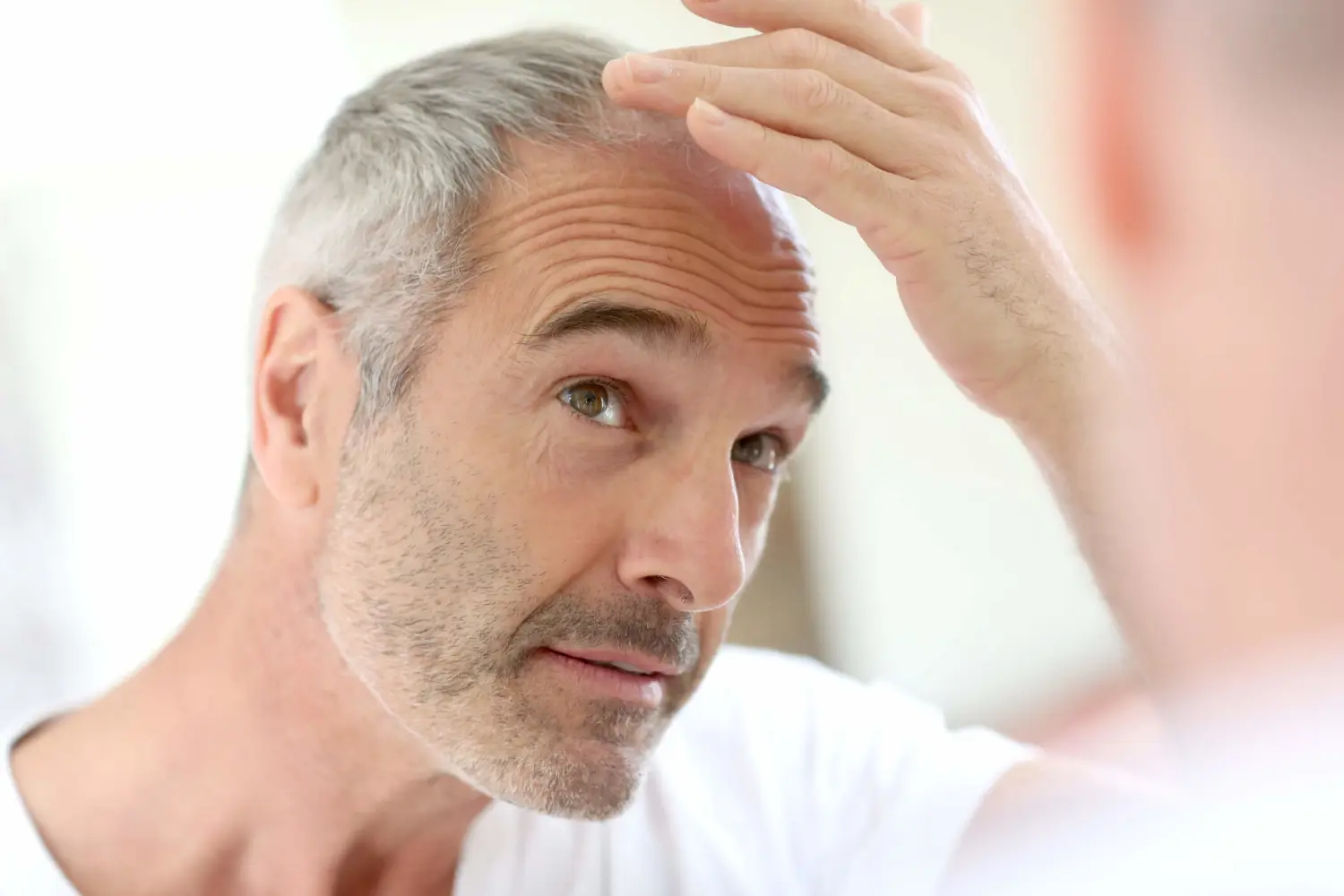Hair loss (alopecia) is a common condition that affects 300+ million people every single year. Nearly 85% of men over the age of 50 will experience hair loss, as will nearly 50% of women. By the age of 35, two-thirds of men will experience symptoms of male pattern hair loss, with balding occurring as early as 21. There are several types of hair loss, just as there is a wide range of causes. Some common causes of hair loss include:
Hereditary hair loss: Hereditary hair loss as a result of aging is a medical condition called androgenetic alopecia (or androgenic alopecia), and is the most common cause of hair loss among adults. Androgenetic alopecia, also known as male pattern baldness or female pattern baldness, occurs gradually as hair follicles shrink and eventually stop growing. In men, this is usually displayed by a receding hairline and bald spots. Women may experience thinning hair at the top of the head, and some patchy hair loss.
Hormone changes: Women may experience hair shedding and hair loss during pregnancy and after childbirth as a result of hormone changes in the body. Additionally, medical conditions such as thyroid problems can result in hair loss.
Medical conditions: Medical conditions such as alopecia areata can cause hair loss and scalp infections. Alopecia areata is an autoimmune disorder in which the immune system attacks hair follicles, which hold the hair shaft in place. This results in patchy hair loss, or total hair loss across the body (including eyelashes and eyebrows).
Stress: Stress can lead to temporary hair shedding. This may occur after the death of a loved one or a traumatic event. Hair loss due to stress is usually not permanent, and hair growth often resumes after some time.
Cancer treatment: Hair loss is a common side effect of radiation to the head (chemotherapy). Hair loss usually begins within the first few weeks of treatment, and may not grow back the same. Dermatologists will prescribe hair restoration treatment options (such as hair regrowth medication) to help restore healthy hair.
Hairstyles and hair care products: Hairstyles that pull hair such as ponytails, cornrows, and pigtails can cause permanent hair loss. Additionally, hair styling products such as dyes and perms can cause hair to fall out, sometimes permanently.

